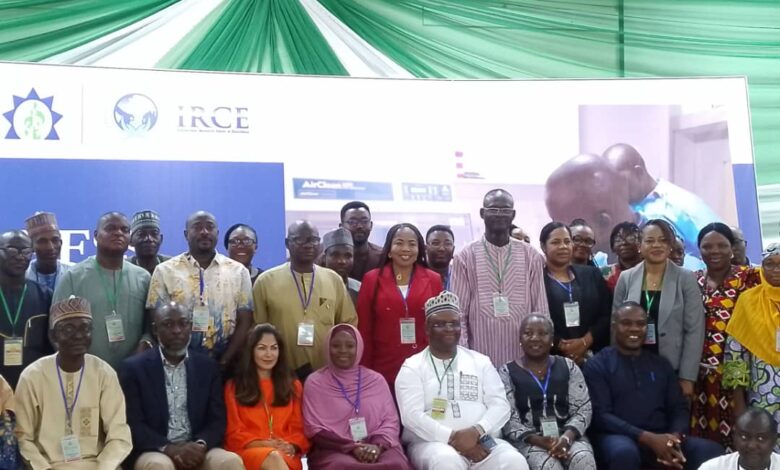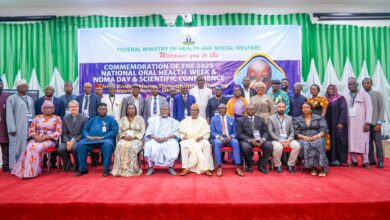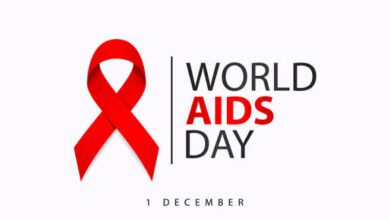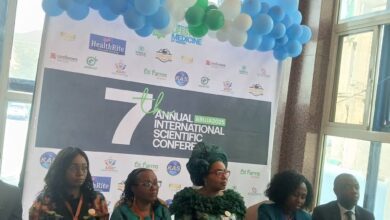Two Years After, IHVN Transitions AFI Surveillance Project To Nigerian Govt
By Alice Etuka, Abuja

The Institute of Human Virology, Nigeria (IHVN) has handed over its two years old
Acute Febrile Illness Sentinel Surveillance (AFIS) project to the Nigeria Centre for Disease Control and Prevention (NCDC), State Ministries of Health and Healthcare facilities.
At the transition meeting held in Abuja on Monday, August 12, 2024, IHVN noted that the main goal of the project was to strengthen surveillance and diagnostic
capacity for priority pathogens associated with acute febrile illness in Nigeria and transition implementation to NCDC.
The Acute Febrile Illness Sentinel Surveillance (AFIS) project commenced on April 4, 2022, with the primary objective of determining the cause of AFI among different age groups.
While its secondary objectives
include strengthening epidemiological and laboratory capacity of the country to address Acute Febrile Illness (AFI) and
establishing a biorepository.
AFI is a common manifestation of various infectious diseases with localizing symptoms (e.g., diarrhea, cough or other
respiratory symptoms, neurological manifestations). It may also be experienced without localizing symptoms (undifferentiated AFI).
In Nigeria, limited diagnostic services often lead to treatment based on the symptoms without knowing
the specific cause of the fever.
The project is a prospective surveillance
based on the case-definition in the study
protocol at six selected health facilities
across the geopolitical zones of Nigeria.
These are; Kubwa General Hospital in the Federal Capital Territory (FCT), General Hospital Gbagada in Lagos State, University of Nigeria Teaching Hospital in Enugu State, Barau Dikko Teaching Hospital in Kaduna State, State Specialist Hospital in Bauchi state and
University of Benin Teaching Hospital in Edo State.
Speaking on the significance of the transition, Programme Director of the United States Center for Disease Control (US. CDC), Division of Global Health Protection, Farah Husain said, “Surveillance of Acute Febrile Illness is an essential component of overall surveillance”.
Husain further stated that, “as public health professionals, it is our obligation to protect the health of the population. Fever is a common sign of many infections caused by diverse pathogens. We also know that it is too often misdiagnosed and incorrectly treated contributing to the increase in drug resistance, thereby increasing morbidity and mortality.
“In turn, we sometimes end up doing exactly the opposite of what we set out to do. AFI surveillance with laboratory confirmation can help us better determine what pathogens are in circulation so that we can identify and respond to both emerging and re-emerging disease threats”.
She also noted that, “we have made great strides over the past two years. We built capacity nationally and subnationally in surveillance, lab, data management. We also hit some stumbling blocks and have learned many valuable lessons along the way”.
On his part, Director General of the NCDC, Dr. Idris Ojo stated that the transition was not merely a handover of responsibilities but rather an opportunity to identify and address concerns with the AFI transition.
Dr. Ojo who was represented by the Director Special Duties of NCDC, Dr. John Oladejo noted that the transition was, “an effort to recalibrate our strategies, integrate new insights, and ensure that our surveillance systems are robust, responsive, and adaptable to the ever-changing landscape of febrile illnesses”.
He noted that the aim of NCDC in this new phase was to, “enhance our data collection and analysis capabilities, improve the timeliness and accuracy of our reporting systems, and ensure that our response mechanisms are agile and effective”.
This, he said would require continued collaboration at all levels—local, national, and international—and a renewed focus on capacity building, resource allocation, and community engagement.
The Acute Febrile Illness Sentinel Surveillance (AFIS) project was implemented with funding support from the US.CDC through a collaborative agreement with IHVN.






